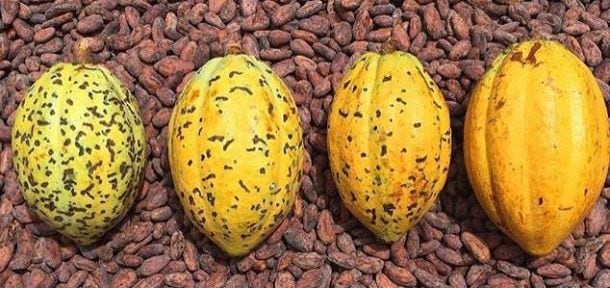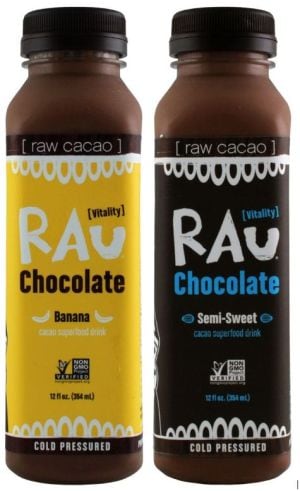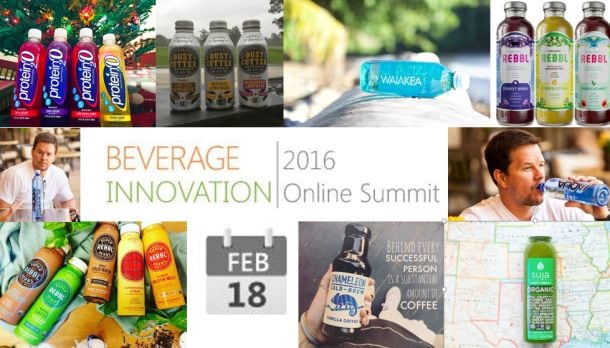But its sheer novelty has presented challenges as well as opportunities, admits San Diego-based co-founder Daren Myers, who has just downsized RAU bottles from 16oz to 12oz to meet a $3.99 price point and to make them accessible to a broader audience – just as Suja did with its Essentials line – and expects to see a significant increase in distribution in conventional as well as natural channels.
“Brian [co-founder Brian Watrous] and I have done hundreds of demos, and we still get a lot of questions about what RAU is,” added Myers, who has secured listings for RAU in around 210 stores primarily in California (from Whole Foods and Mothers Market in Orange County to independents) but is now doing deals to take the brand nationwide in 2016.
“We tell people it’s a cold pressured superfood chocolate drink, but the next question is nearly always, ‘Is it chocolate milk?’ Our answer is No, it’s a dairy-free and low or zero sugar, and by cold pressuring it we retain the nutrients in raw cacao beans,” he told FoodNavigator-USA.
There’s really nothing like RAU on the market
Chocolate – drinking or otherwise - is a superfood, he added, but the way that it is processed, and the stuff that is added to it, often turn it into something less nutritious. RAU is simply trying to bring it back to its roots, which start with raw cacao beans packed with phenolic compounds.
“There’s really nothing like RAU on the market, it’s raw cacao beans, which are a superfood, cacao butter and spices, without the dairy, the preservatives, all the sugars, and artificial ingredients.”
(RAU Original contains: filtered water, organic raw cacao powder, organic raw cacao butter, raw Kalahari desert salt, organic raw vanilla bean, organic spices, and monk fruit.)

Do shoppers get HPP (high pressure processing)?
But do shoppers ‘get’ what cold pressured means? Or HPP? And would the term ‘cold pasteurization’ make more sense?
Myers is not keen on the phrase ‘cold pasteurization’, in part because it is technically inaccurate, he argues. “If you look at the definition of pasteurization it’s the induction of heat.
“But HPP is really pascalization [whereby foods or beverages are put into a chamber that is flooded with cold water and pressurized, a process that inactivates micro-organisms without the use of heat, and does not degrade the nutrients, thereby ensuring that products taste like the ones you’d make at home, but contain no preservatives, and have a shelf-life long enough to secure national distribution].”

Adapt or die… The recipe and marketing messages have evolved over time
As for the formulation, RAU has been in a constant state of evolution, says Myers, who initially envisaged it as a kind of superfood shake containing everything from flax seed oil to vegan protein before he homed in on the cold-pressed cacao concept and ditched the other ingredients.

As raw cacao beans are quite bitter, finding the right sweetener (he eventually settled on monk fruit, although RAU coconut contains some coconut palm sugar as well) has also been a big challenge, he says.
“If we had flash pasteurized the product it actually would have reduced the bitterness of the beans [the bioactive components in the cacao beans are what makes them bitter, and high temperatures degrade them] but that would have eliminated the entire premise of what we were trying to do in the first place.”
The positioning of the product has also evolved over time, he adds, with the initial focus being all about health and functionality but more recent approaches concentrating more on the indulgent flavor profiles.
“We also talk a lot about the fact that it’s cold-pressured, non-GMO, dairy-free, and tastes incredible.”
Funding the business: We want to build strategic partnerships
Up to now, the business has been funded by friends and family, but Myers and Watrous – who were roommates at college and still own the vast majority of the business – are now looking into “larger fundraising opportunities” to support their national expansion.
“Groups or individuals that are interested in funding us want to see strong proof of concept, strong sell-through, and they usually look for a few million in sales, and there’s a big gap from a local brand to being that size,” he observes.
“For us it’s all about relationships, we want to build strategic partnerships, that’s just as important as equity.
“We want to work with people we trust and believe in that can provide significant resources and assistance in areas where you may not be as strong.”
Interested in new beverage trends? Register for our FREE live online beverage innovation summit on Feb 18 and hear from Suja, Rebbl, Chameleon Cold Brew, AquaHydrate, Waiakea, Dust Cutter, Protein2o, Euromonitor, Kroger and Canadean...

